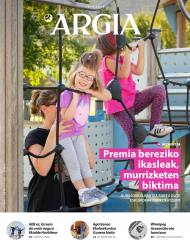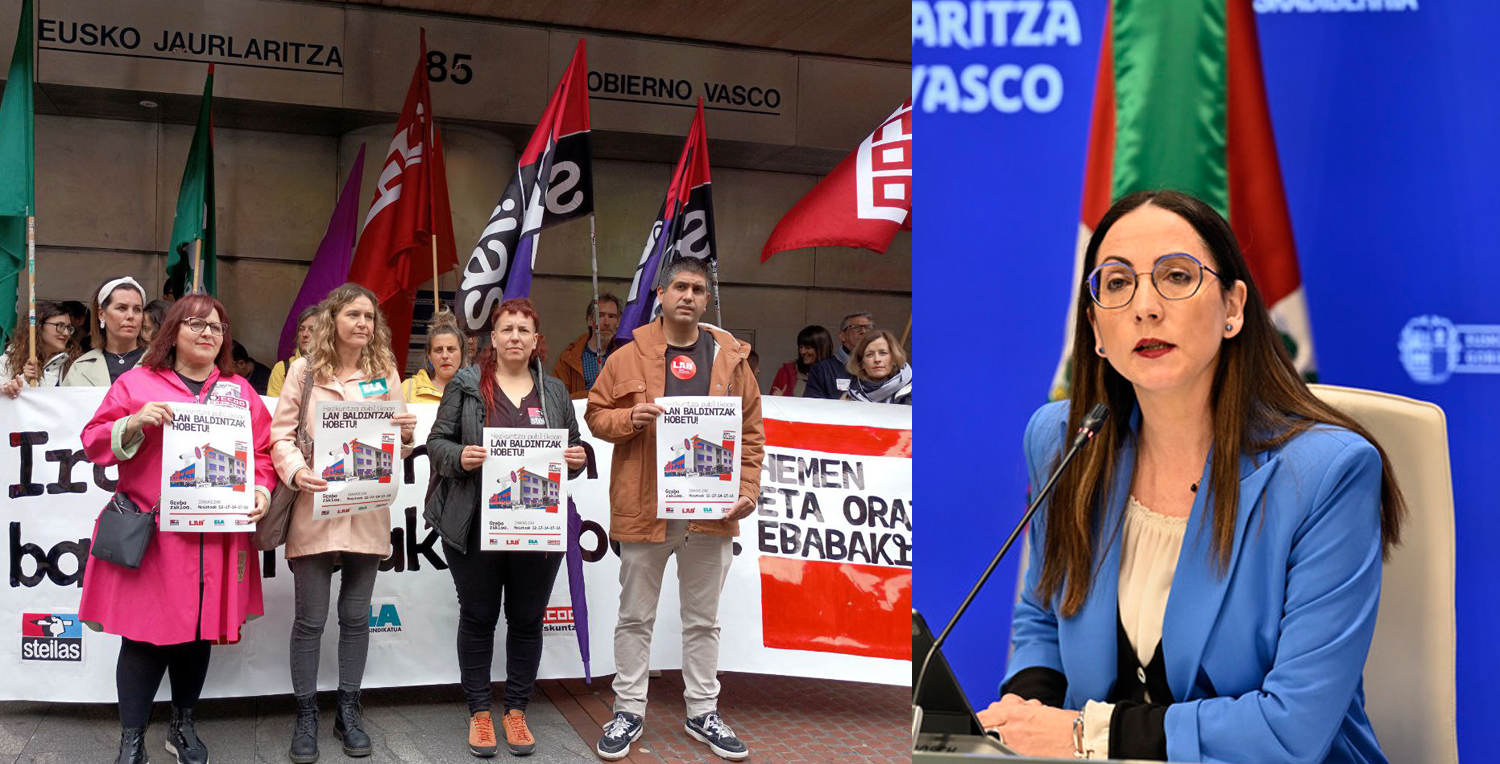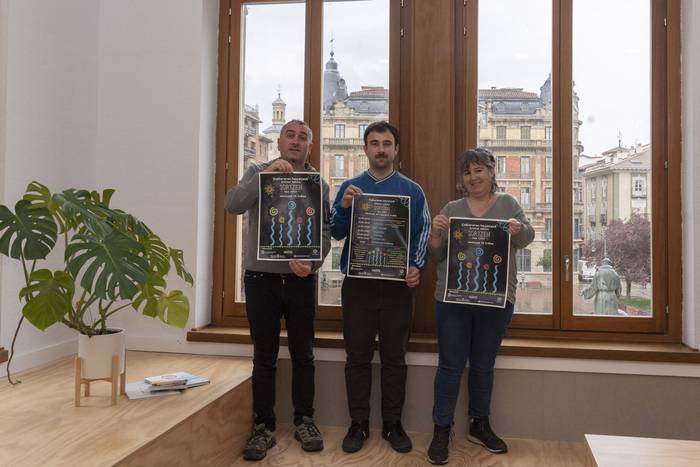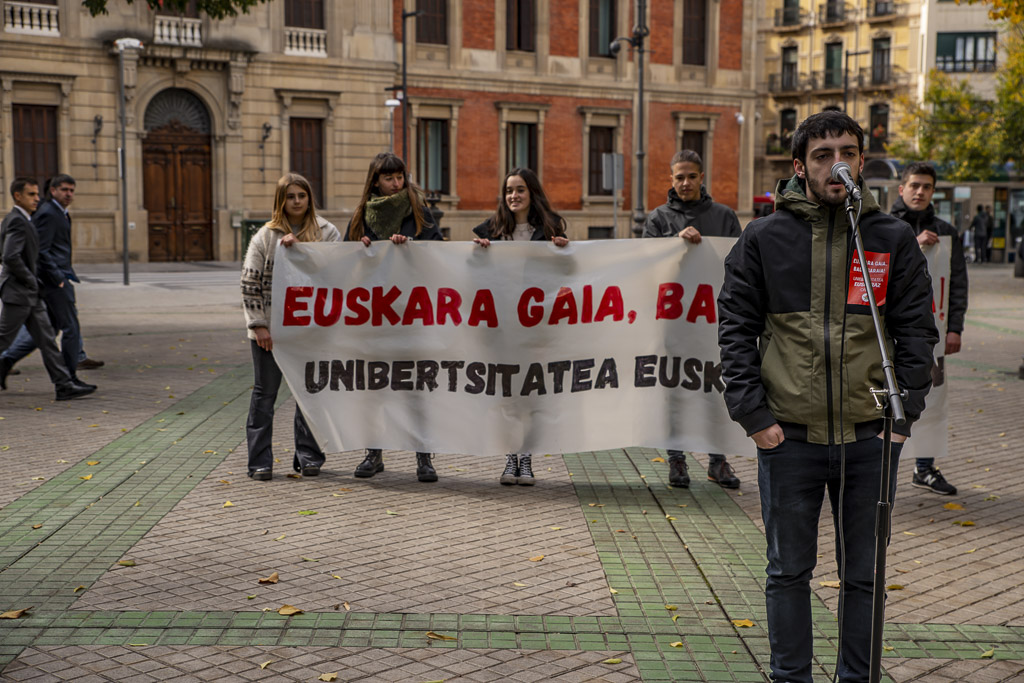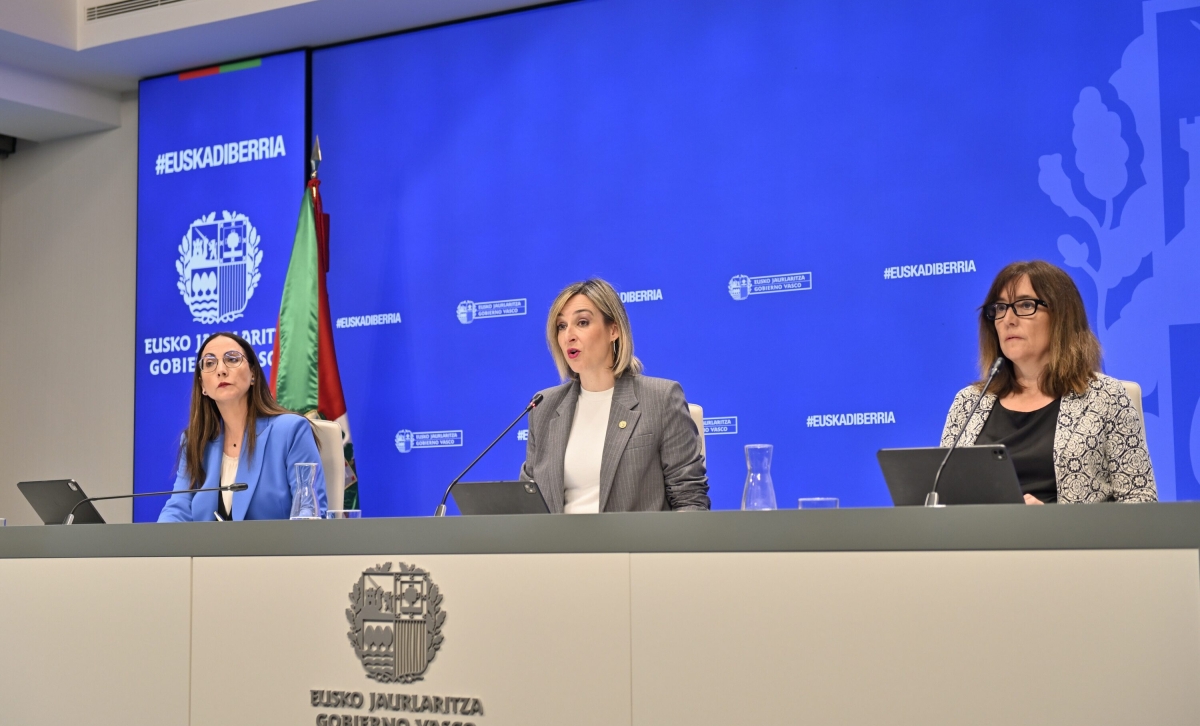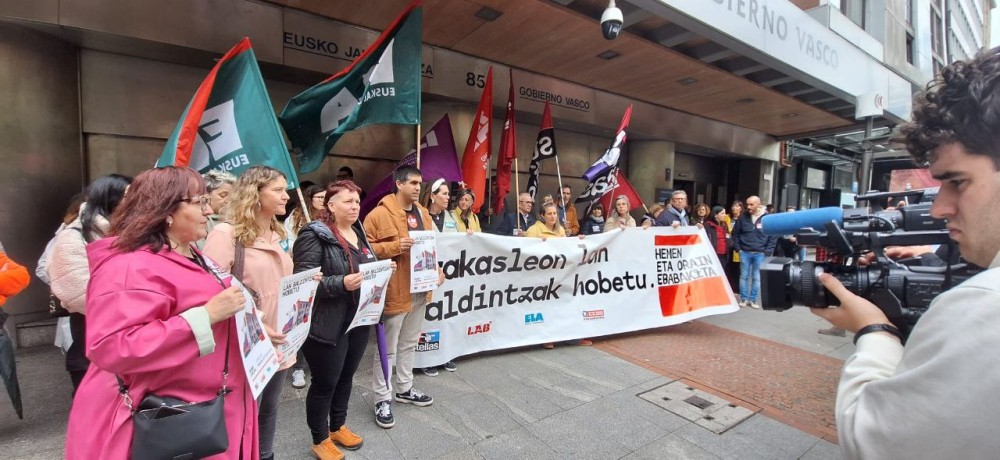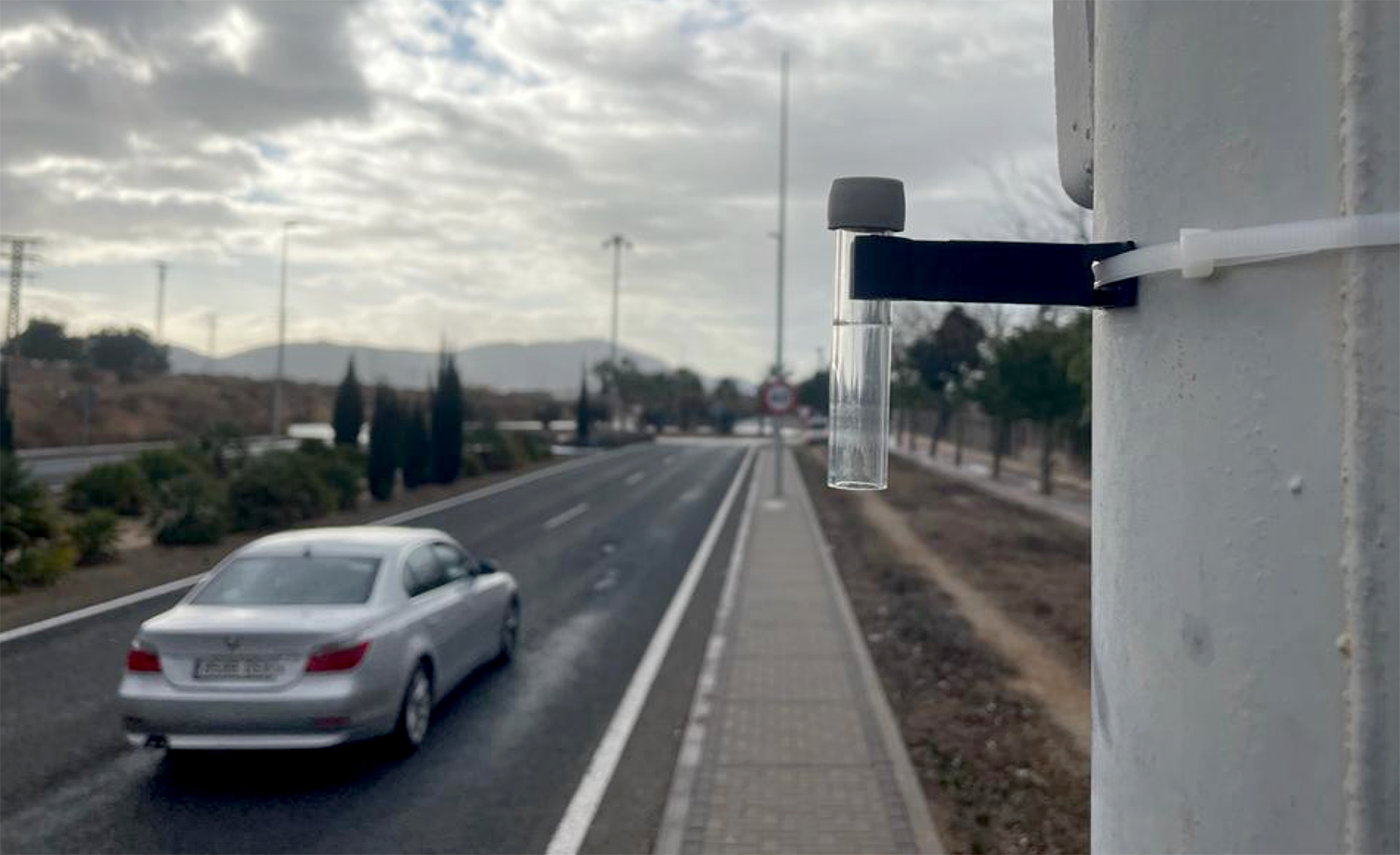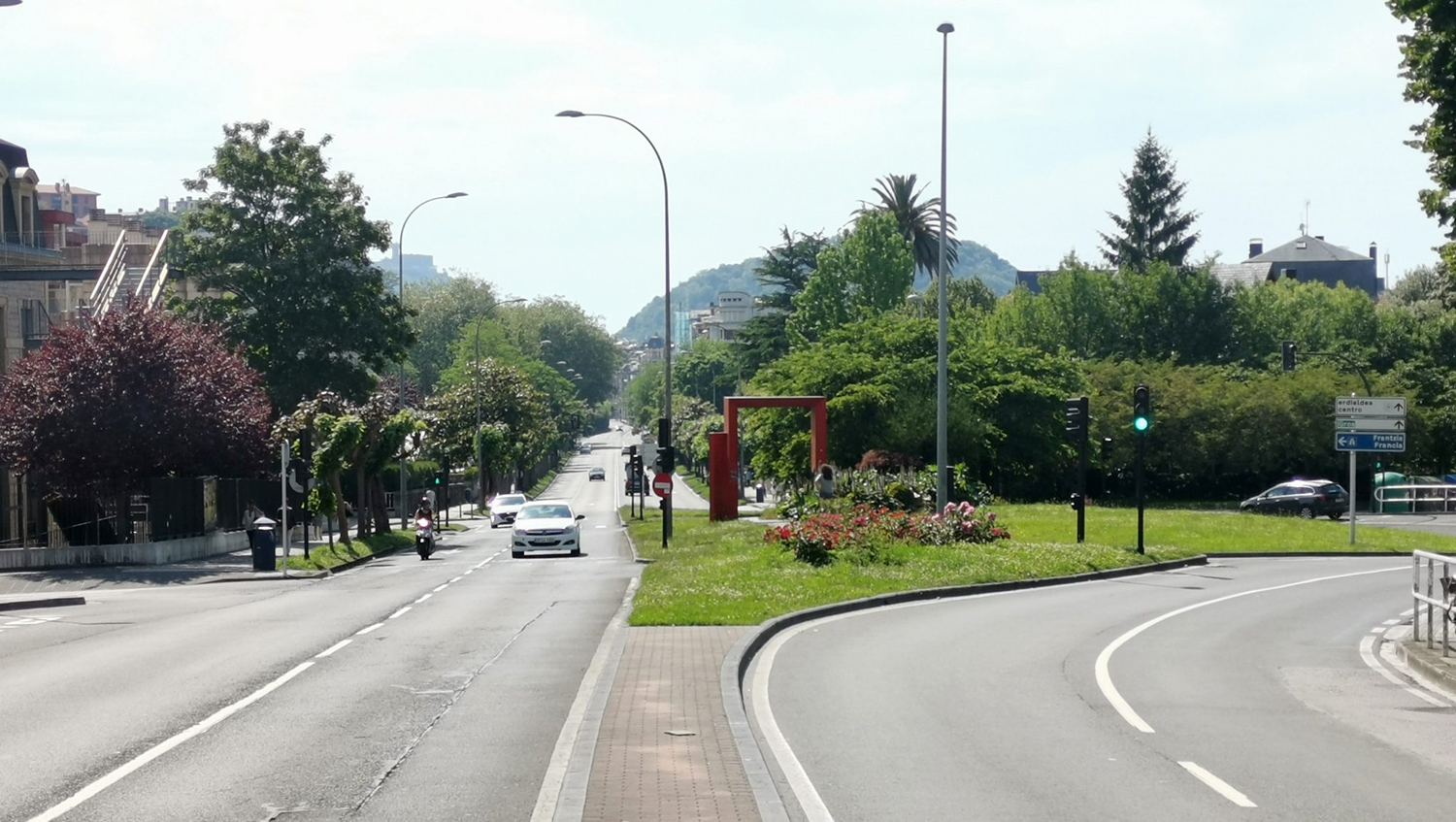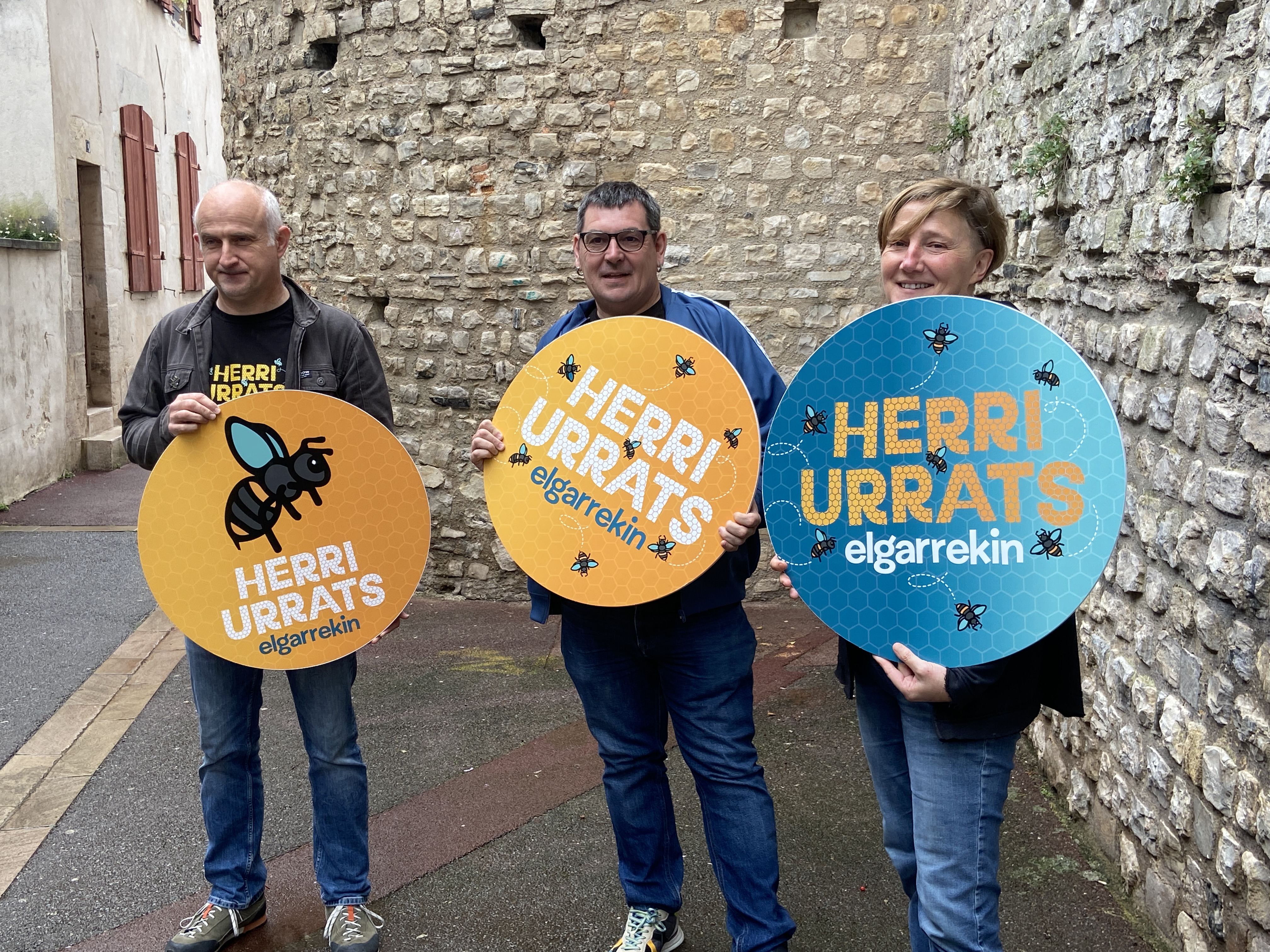Education that does not meet students with special needs
- The administration sells an inclusive school, but the parents of students with special needs describe a very different reality: the decisions made in the offices allocate less resources and educators than they should to their sons and daughters, take them out of the ordinary classrooms and lead them to the stable classrooms to get rid of the “problem” and save money, and families have to repeat an endless struggle every course so that they do not leave the child without help.

Olaia is 4 years old and born with myopathy, which makes the muscles very fragile. So far she has come to Bakio school in a few hours and this course the parents asked her to be an educator in all classes, but Education offered her half a day: “For the rest of the hours, what is said to the center is that they adapt it with the resources you have, and that means that in the hours when there is no educator, for example, the professor who is freer will have to help, and in the small centers it is not always possible. The college also supported the need of the entire educator, but the Education Delegation responded that no. We lodged a complaint, adding the physiotherapist's report, but once again we refused. In the end, we've contacted a lawyer and we've written explaining that we're going to go, I also intended to go to Ararteko, and then yes, they've done a pedagogical evaluation of the girl and they've concluded that Olaia needs a full educator. In the past, the profile of the daughter was read and the decision was made based on a paper, because I have committed myself to having a face-to-face evaluation”. Elena Arroyo is clear: her case has been resolved by noise, but “this assistance will not be repeated in the coming years. Every year we have to act like this, as if we are begging, and if we get what the child needs, they treat us as if they have done us a great favor, when it is a child’s right.” There is no doubt that the wear is great, not all families are willing to fight continuously, they are not able, they end up exhausted on the road… “and the administration takes advantage to do what it wants.”
Susana López is also a fighting woman. The 9-year-old Ander son, who is within the autistic spectrum, has always remained in Irun's ordinary classroom, accompanied by the educator, until two years ago he was proposed from the Berritzegune, which is somehow a bridge between the administration and the educational centers, to bring his son into the stable classroom. Stable classrooms are classrooms that only have students with special needs, approximately five students and one and two educators, “and the stay of the child in them is cheaper than in the normal room. They make you feel that your son is a burden to them, that he needs a lot of resources to keep him in the normal classroom,” but taking him to the stable classroom meant changing Ander to another school and also didn’t convince them: “That is not inclusion; they were children with very different profiles, because they mix everything, put directly those who have some disability and it was over, and we saw the son prepared to stay in the normal room, he is a quiet child.” The family said no and they only gave them an alternative: Ander would have to repeat course. “Last year he repeated and went wrong, lost friends and at the end of the course, the same proposal: to the stable class. In the end we surrendered, but at least we went to the stable classroom of the Gautena Association.” Gautena is a specialized association in autism.
Kattalin Ezkerra: "Parents do not have the right to know what aid has been allocated to their sons and daughters," he added. Why? For the school to do the puzzle, maybe some of the hours it was Amaia give it to Iker."
On hunger strike,
Raquel García's 7-year-old daughter for her daughter's rights also has deep autism, and from the beginning she has had a very bad experience with the Education sector, because she hasn't given her the help she needs, says the mother. When he came to Primary, from the berritzegune they told him directly that it was impossible for the child to have an educator throughout the hours “and seeing that in the ordinary classroom he would not have enough resources and that my daughter has the highest level of dependency, at least I asked for a stable room in Balmaseda, but they told me that in Encartación a stable room was not needed. Why? Because in the ordinary classroom they were kept out of resources and then sent directly to special centers, they were taken from above.” Garcia launched a successful collection of signatures to bring together parents of students with special needs. He also created the association Lagundu NEE, with the lawyer who prepared the complaints, started a hunger strike and focused on the media… “and then yes, they called me: to put a stable room in Sodupe. And look, last year they opened their doors, and this year four students are already there. Didn’t they say there was no need?”
Raquel García says that there are many families affected. As an example, he has cited two cases: “Recently, a student with special needs at Our Lady of Europe School in Getxo has been invited to leave the center, arguing that it lowered the level of the center. And in another school, the student who can’t even scratch himself has been put half an educator in the ESO; the rest of the hours if he is itchy have been told to scratch, but for example, if he has to go to the bathroom.” Some parents complain that their children do not have sufficient resources for transporting their home to the school or dining hours.
The Lagundu Enkarterriak partnership started in late 2017 with another mother, but the initiative has spread to the whole CAV and has become Lagundu NEE Euskadi: “In a short time more than a hundred families have joined us, demonstrating that there are many needs and many families lost. There is a lot of ignorance, because many things are hidden from families and many believe what they are told since Education, or they don't want to get into trouble, they are afraid ... We inform families of their rights and what and how they can do it.”
.jpg)
How do you decide on the help the student needs?
Basically, families, educators and unions criticize the process of resource allocation – if the child needs an educator, therapeutic pedagogue, speech therapist … and for how many hours – for different reasons. On the one hand, because it is decided on paper which help is assigned to the child, by means of a mathematical formula: berritzegunes will introduce the student's information and the computer application will determine the number of hours of help corresponding to the profile obtained, they say. “They just see the child, those who have to decide,” the interviewees say. “In addition, from the time frame of profile, they give you almost always the minimum. The daughter was 16 to 27 hours of help and was given 16, but as another student was in the same situation, what did they do? 16 hours for 2, 8 hours each. What kind of logic is it?” says Raquel García.
On the other hand, they have explained that Education cheats: the number of hours that are decided for each student is not public, “although they have been asked, the government does not give data, it is a lack of transparency”, say from ELA, and the hours that are decided – instead of the child – are assigned directly to the center for it to distribute them. The educator Kattalin Ezkerra is clear about what lies behind it: “The Resource Sharing Protocol expressly states that this information will not be provided to parents, who will not have the right to know what resources have been allocated to their sons and daughters. Why? For the center to puzzle, depending on its needs, and perhaps some of the hours that corresponded to Amaia are passed on to Iker for his difficult attitude, although he may not be a student with special needs. It’s a trap for Amaia’s parents not to complain.”
For example, what happened in a center of Gipuzkoa this same course: an educator had two students accepted; a new student has arrived suddenly, has special needs and has been given priority since the administration. “The resources you have dedicated to him,” they said. That is, the educator has to dedicate the hours to him, leaving the others without hours.
K. Left: -Ability to speak, to be silent and to work on paper. If one of them fails, he heads to a stable room. It is a shame, because often the key is not that the student does not have the ability to internalize something, but rather that he does not internalize by the usual channels"
If you bother, to the stable classroom “in Europe the trend is that special schools and stable classrooms are disappearing to achieve real educational inclusion, and here the system also sells that, but many end up in
our stable classrooms, because they often press their parents, ‘or you pass your son or daughter to a stable class, or will not have enough help in the normal class,’ says Elena Arroyo. Steilas has denounced that most students with hearing impairment are also redirected to the Schools of Clustering, “denying families the freedom to choose a school”.
Fundamentally, change needs a little more depth in ordinary classrooms, according to educator Kattalin Ezkerra: “Above all from the 3rd, the teaching format is that all students sit at the table looking at the professor, doing exercises and corrections at the same time. Diversity is not taken into account, and what we have to do is adapt to this situation in the way we can with our students. There are professors who reorganize the spaces and the forms of teaching so that all students arrive to the information, but they are personal decisions, taken voluntarily, the system goes in the opposite direction: patches are placed and when the patches do not serve, they are sent to the stable classrooms. There are many boys and girls who are left out of this system and are left far out, to take them to another class and ready, that's marginalization, not inclusion. In Gipuzkoa, for example, a lot of stable classrooms are being opened and students who bother in class are heading for them. Are some better in the stable room? Yes, but I've had students who could be quiet in the normal classroom, and the tendency has been to direct them towards stable classrooms. In practice, students are asked to maintain the normal class: the ability to speak, to be still, to be silent and to work on paper. If you fail in one of them, you head to the stable room. It is a shame, because often the key is not that the student has the ability to internalize something, but that he has not internalized it by the usual channels, and you have to think and invent new paths.”
Eba Gómez: "The goal of the educators is that the student be as autonomous as possible, that they do not need our help. The problem is that the Administration withdraws aid not from this criterion, but to save"
Educators, charged Educators
reaffirm the criticism of parents: the help there is for students with special needs is not enough, and the cuts are guilty of it: “At one time each educator could have a maximum of three students, now we usually work with five, think about the quality we can offer,” says Eba Gómez. “There are more students for a similar number of educators, so we can devote less time, we also have to move from one student to another throughout the day, with the agitation that this generates for them and for us, and although our objectives are others, in the current model it often becomes our work of consensus, of keeping the student, ‘that doesn’t bother us too much’ in the classroom.
In fact, the goal of educators is to make the student as autonomous as possible, who little by little does not need any work… “but the problem is that the administration reduces or withdraws aid not by the criterion of autonomy, but by saving money and resources, and with that starting point many who need help do not receive enough help,” they add.
Ezkerra has also criticized the adapted curricula, adapted content prepared for students with special needs: “Sometimes they’re too easy for the student, they set goals below what they can do, and it’s done intentionally to make everything comfortable, there’s no hope for their future.”
We have taken as
an example the strength of the group in Araba, Bizkaia and Gipuzkoa, but the interviewees have told us that the situation of students with special needs is bad throughout the Basque Country. “Imagine, in Ipar Euskal Herria, the criteria that the administration has to work with these students are to be in long-term unemployment and to be a woman. And they are not required either a degree or anything,” they have denounced from LAB.
In Lagundu they are not stagnant, more and more people are united and know that the strength of the group is fundamental, that this support is what gives value to families to continue to claim the best for their children. This course has told us that they intend to organize a great mobilization in favor of an educational model that takes into account students with special needs. Families are clear that they are not going to stop fighting.
.JPG)
The Department of Education reported on diagnostic evaluations in February: He talked about the mid-stage of 2023 and the end-stage of 2024. Since the disastrous results would show that we have a structural problem, the department decided to comply with the procedure (publish... [+]
I found the old news on the LIGHT ephemeris channel: On April 23, 1918, Irish workers went on a general strike in I. Against forced recruitment for World War II. Thanks to the response of the workers and independence supporters, Britain was forced to retreat.
We don’t have to... [+]









